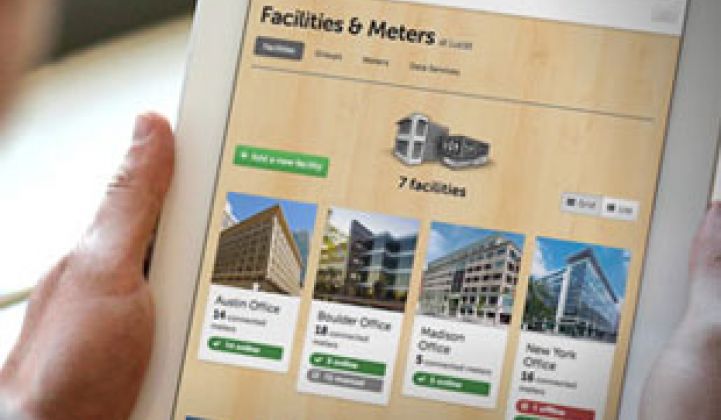Many people are obsessed with their iPhones because they love the applications that can run on the device. In order for an operating system for buildings to be successful, it will also have to offer apps that people crave.
A few months ago, Lucid launched BuildingOS, which is meant to be a one-stop online operating system for buildings. It brings together meter and building system data into one integrated platform at a lower cost than traditional solutions. In the past few months, it has been strengthening and racking up partners that will run their offering on BuildingOS. The latest partnership is with Urjanet.
“Data access is the first step toward enabling energy efficiency,” Lucid CEO Vladi Shunturov said in a statement. “We created BuildingOS to make data access easy by eliminating the silos that exist between building technology vendors. Our partnership with Urjanet extends the reach of BuildingOS even further by giving customers visibility into their utility bills.”
BuildingOS claims that more than 500 million square feet of space uses the platform. Urjanet, which makes it easy for buildings to get their utility data, is a solution that customers have been asking for, said Shunturov. Even if customers already have submeter data, they still want to have their utility bills delivered to them in an easy-to-digest format to compare to the actual usage.
BuildingOS can only be successful if it can pull in all the data a customer may be looking for. On the building side, that has meant building relationships with meter vendors who are looking at installing more connectivity so that they are cloud-ready to integrate with BuildingOS out of the box. Currently, BuildingOS integrates with more than 150 building systems and submeters. For customers, it’s also about offering tools from companies like Retroficiency and Honest Buildings to help portfolio owners make better decisions.
Even for customers that have real-time interval metering data and use the likes of Retroficiency to do no-touch audits, Shunturov said they were still asking for easy access to utility bills to reconcile what they’re paying with what they’re measuring.
Some of Lucid’s existing customers, many of which are universities and colleges, have upgraded to BuildingOS for not just the buildings they were already monitoring -- usually dorms -- but also for many other campus buildings and facilities.
Besides existing customers, Lucid is also finding traction with local governments and Fortune 1000 companies. As municipalities and corporations become more sophisticated about managing energy use, “people don’t want to log into seven systems for each building in their portfolio,” said Burns, senior VP of sales for Lucid. “There are more and more stakeholders at the table.”



